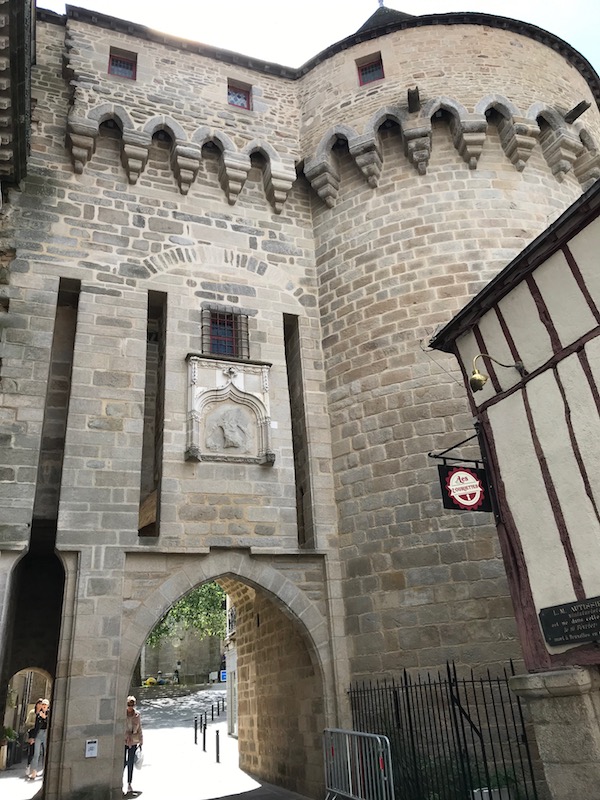Our Blog - Vannes, France
Nearing the end of the vacation, we played our last round of golf and then headed to the city of Vannes, which sits on the Gulf of Morbihan. The old town is enclosed by ramparts and is known for having lots of half-timbered houses that were not destroyed during WW II. As with many things, it dates back to Roman times, originally named Veneti.
Vannes is one of the few towns in the region that were spared during World War II. That makes its Old Town (Vielle Ville) particularly appealing. It was a walled city, with fortifications erected between the 3rd and 17th centuries. The original Roman fortifications lasted from the 3rd to the 14th century, when the wall was rebuilt and extended to the South to protect new districts of the city. This first door that we used to enter the old city is Porte Saint-Jean, which was named for a church that used to be nearby (destroyed in 1856). It wasn't always called Porte Saint-Jean, however, holding the names Porte du Mené (Door of the Executioner because of the proximity of the Executioner's Tower), Porte du Nord (Northern Port), and Porte de l'Âne (Donkey Gate).
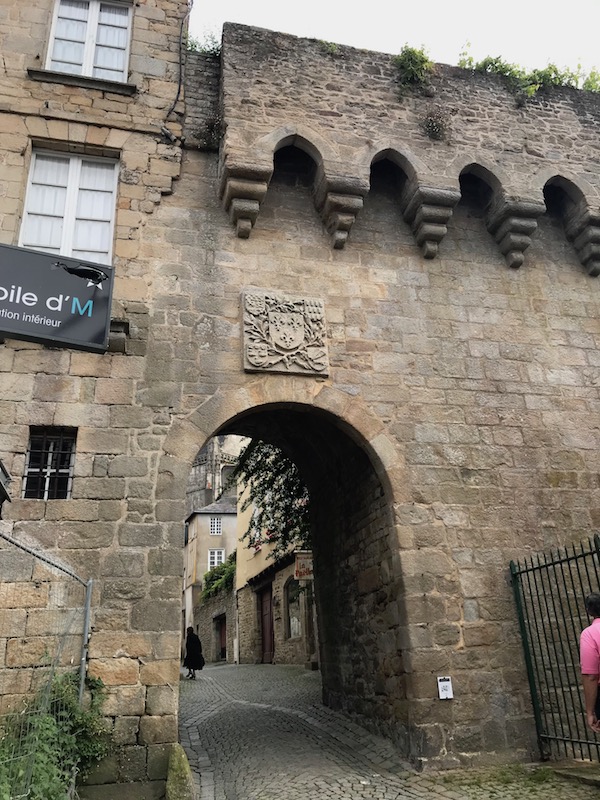

This former industrial building is called the Petit-Fers building, which was built between 1894 and 1906 by a family of metal merchants, the Petit family. In French, "fer" means "iron", so you can see how the building name came to be. It was a wholesale hardware store and then a warehouse until the 1970's, when it was redeveloped commercial space. It has a metal frame and a T-plan. The rich decoration of the facade mixes granite, limestone, tufa, brick as well as cast iron columns and enameled ceramics.

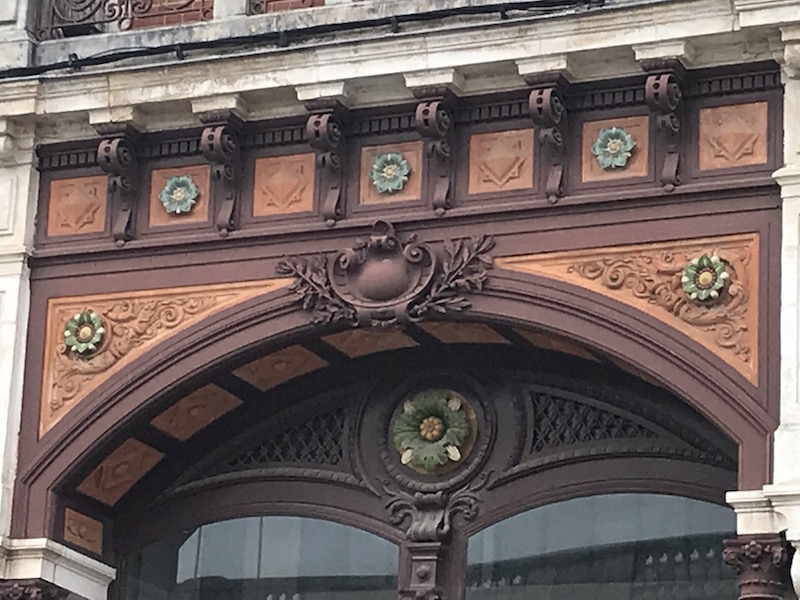
There are quite a few half-timbered houses sprinkled throughout Vannes, some built in the 14th and 15th centuries. Most have a very typical architecture, with corbelling (where each floor up overhangs the one below slightly).
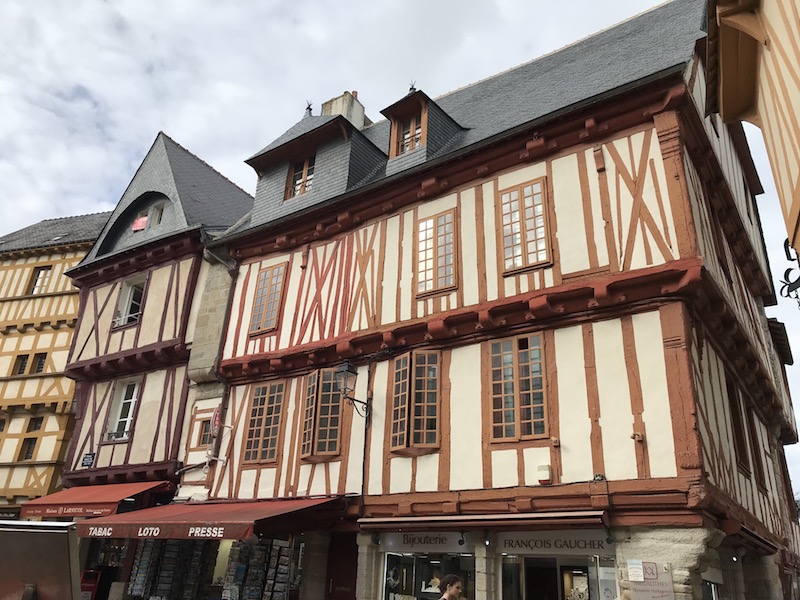
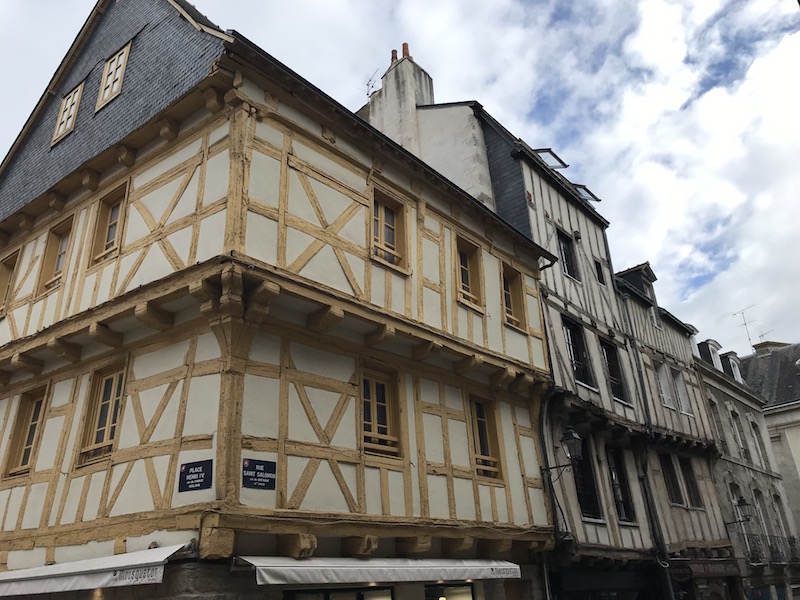
One of the most unique half-timbered houses is the Maison de Vannes et Sa Femme (House of Vannes and his wife). It was built in the 16th century and sports a carving of a shop owner and his wife. They are carved in granite and painted with very expressive facial expressions.
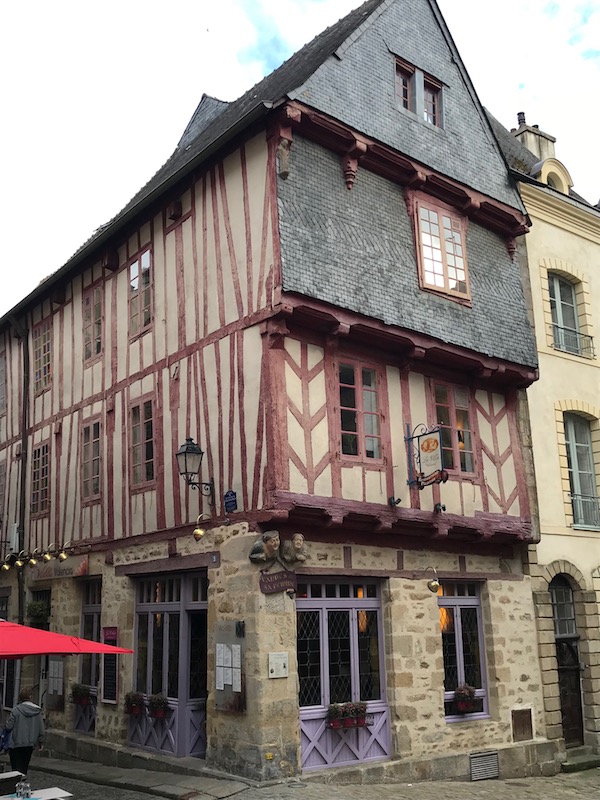
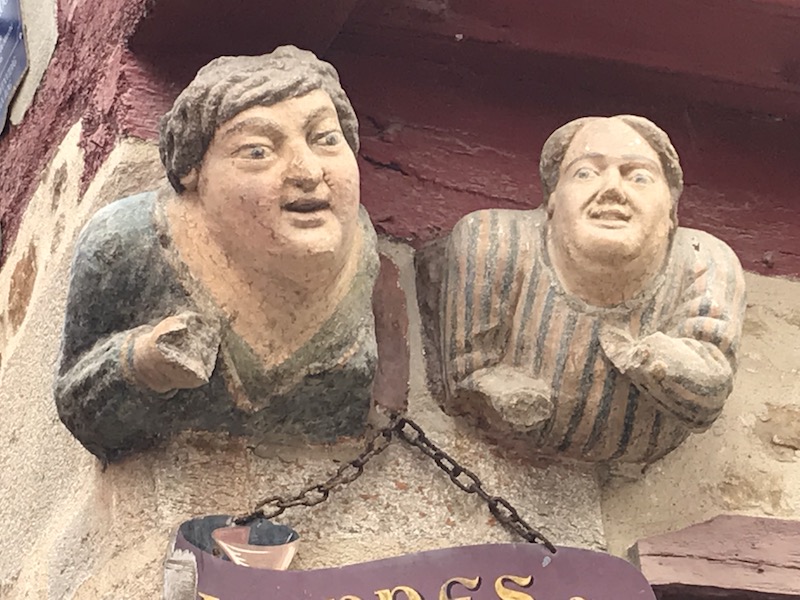
The Saint-Pierre Cathedral is an interesting combination of Flamboyant Gothic, Romanesque, and Renaissance styles due to the construction spanning five centuries, from the 15th to the 19th. The majority of the main entrance is from the 17th century but the choir area is from the 16th and the Romanesque base of the bell tower is from the 13th century. The neo-Gothic western façade was restored between 1868 and 1876 and is divided into three floors delimited by galleries. At the bottom, the portal has 2 doors with a statue of Saint Vincent Ferrier in a covered niche. The carved tympanum over the doors has scenes from the life of Saint Peter and Saint Vincent Ferrier. The two-story Renaissance-style round Chapel of the Blessed Sacrament, added in 1537, is easy to see on the exterior as well. The northern side also has some ruins from the 16th century cloister.

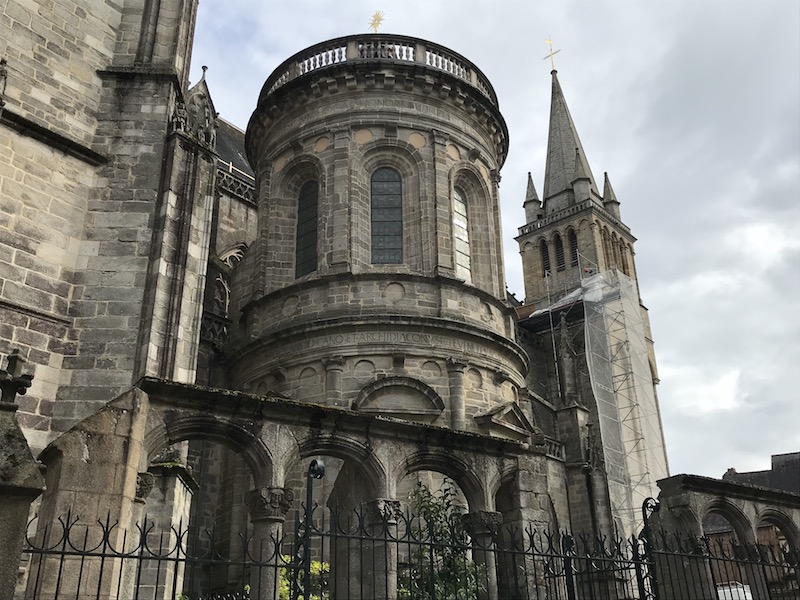
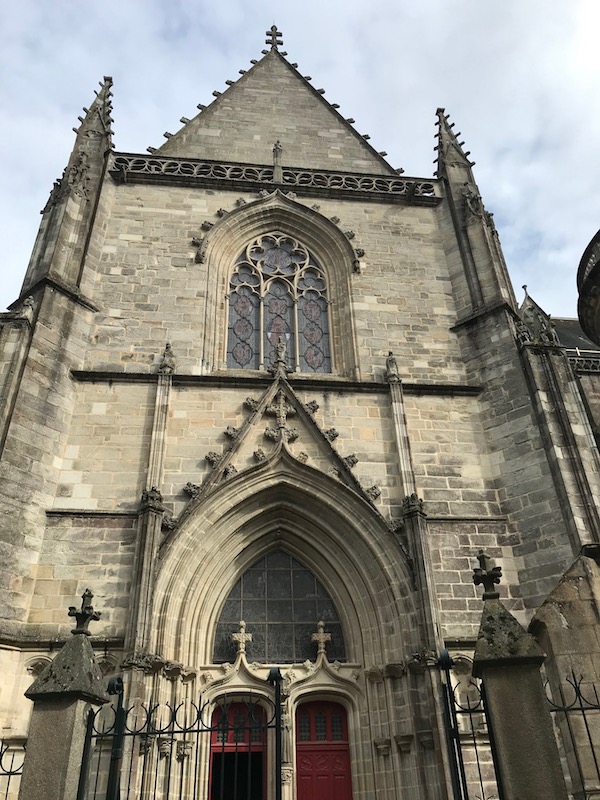

Unlike some of the other churches that were highly decorated, this interior is more "normal" with just the grey stone walls visible. However, the altars are quite nice, mostly done between 17th and 18th centuries, including this one, the high altar that was created in 1736. Each chapel has stained glass windows showing scenes specific to who the chapel is dedicated to, mostly created in the late 1800's.
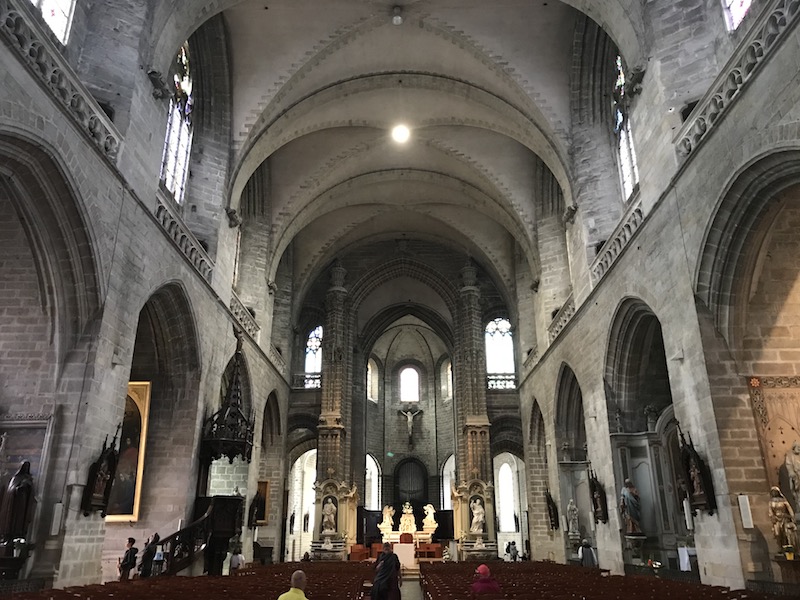

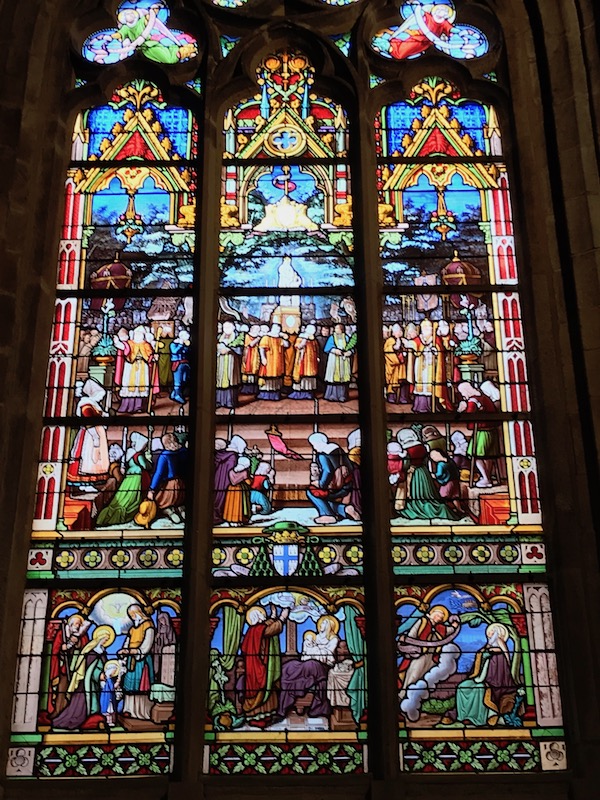
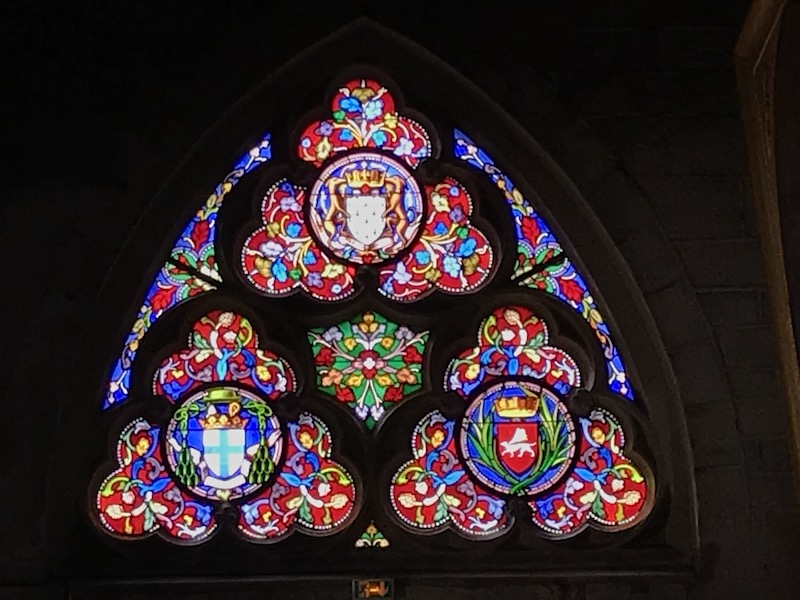
I thought this tapestry was very unique within a church. After his death, there were various miracles that were attributed to devotion to Saint Vincent Ferrier and 5 of these miracles are depicted in this tapestry.
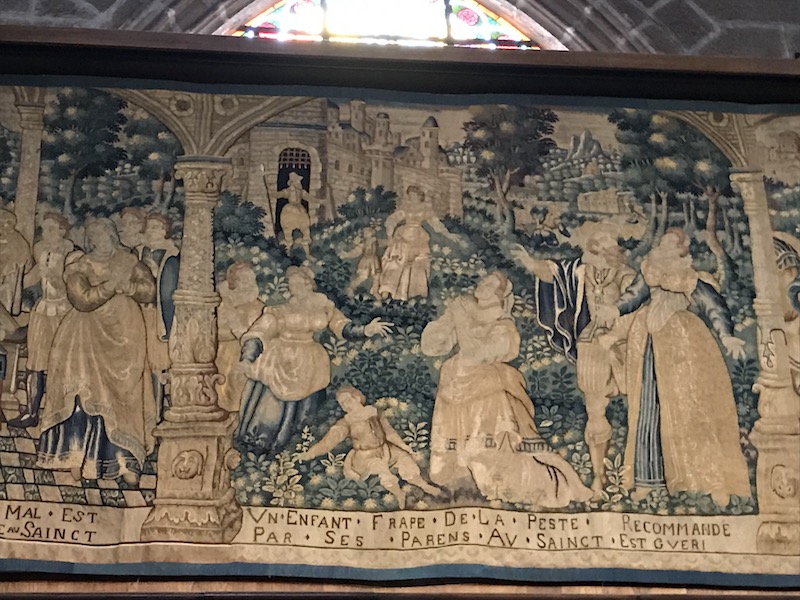
Chateau Gaillard, which was built in 1410, is a former hôtel particulier that is now an archeological museum (which we didn't go into). You can see the traditional mullioned windows and the polygonal stone tower that contains a spiral staircase.
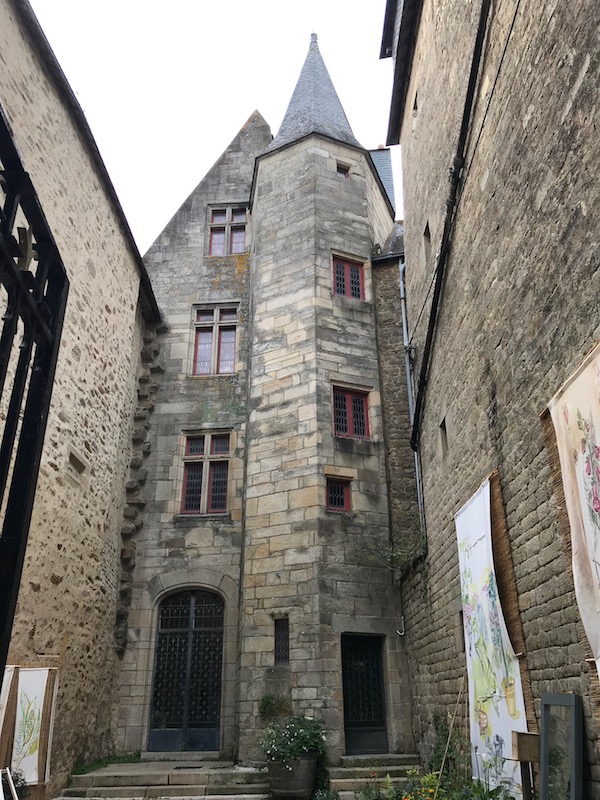
Porte Saint-Vincent is one of the former city gates and dates from between the end of the 16th century and beginning of the 17th century. Integrated into the city walls, it is the main entrance to the old town and was originally to allow access to the walled city from the port. Inspired by Italian Baroque style, the three-level gate has both Doric and Ionic columns, as well as various niches with shells, scrolls and pinnacles. In the upper part, a statue of St. Vincent Ferrier was initially installed in 1624 and then replaced in 1891 along with the addition of the arms of the city on the façade.

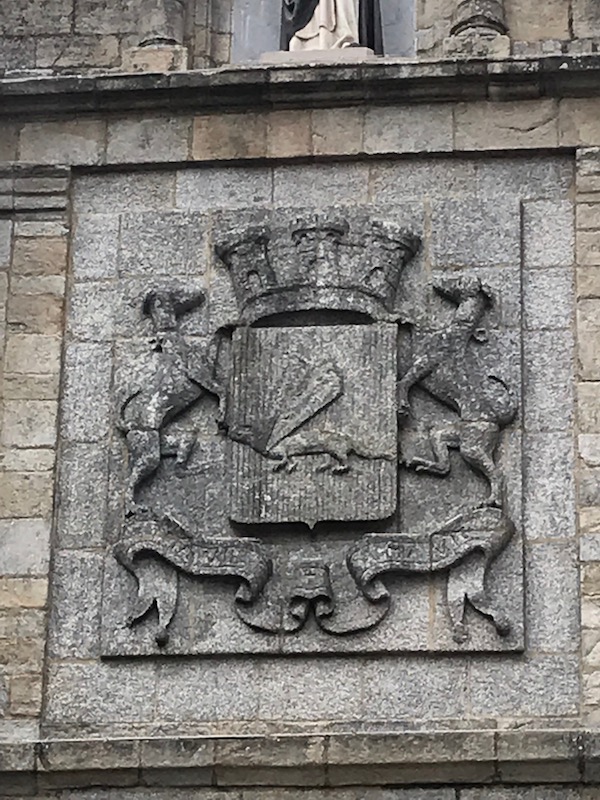
The Château de l'Hermine was built in 1798 as a hotel but ended up being closed in 1803 and then sold several times. The Neo-Classical building is huge with several different roof-lines although the levels under the roofline are very symmetrical. It is pretty much empty now, with some renovation planned. However, it has a nice garden which then opens after the next bridge onto the Gardens of the Ramparts, which is a huge public park. One floral item is quite interesting. The word 'hermine' translates to 'ermine', which is a type of short-tailed weasel. The flag and coat of arms of the city has this animal on a red background, which the gardens have recreated here.
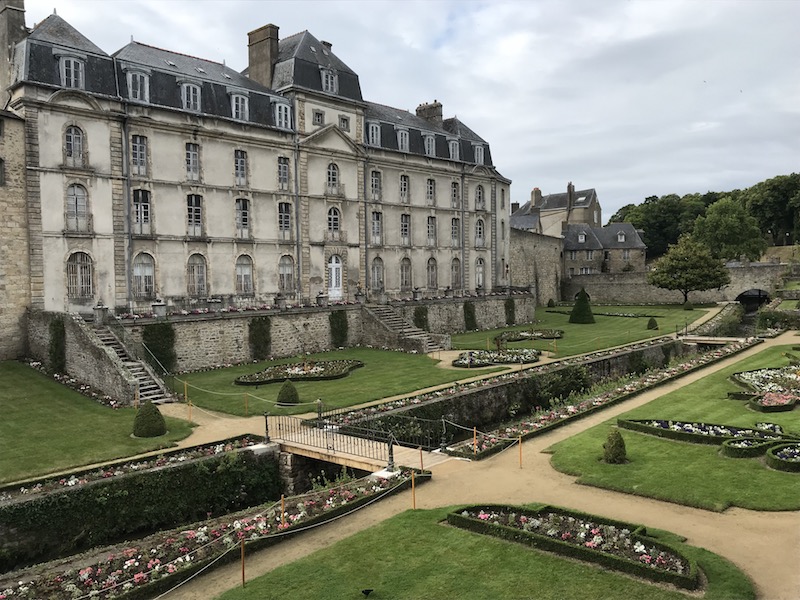

This is an ancient Wash house, that dates from between 1817 and 1821. It was built at a place on the river where a lock could be used to regulate the water level. Once washed and rinsed, the laundry was left to dry on nearby land, which was shown in some old postcards. These facilities were used up until World Was II.
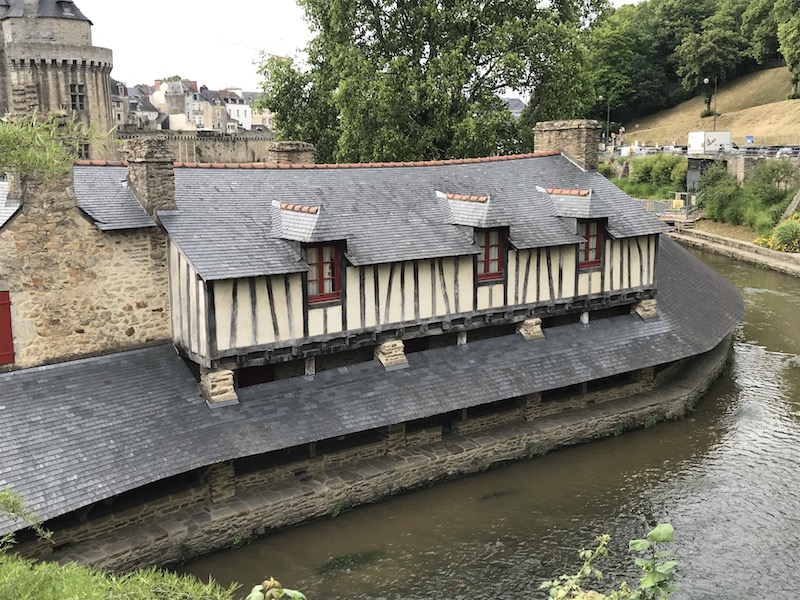
Here you can see the fortified walls and several towers, along with a peek at the Jardins des Ramparts, which was being worked on when we were there so we didn't take pictures of the actual public gardens.

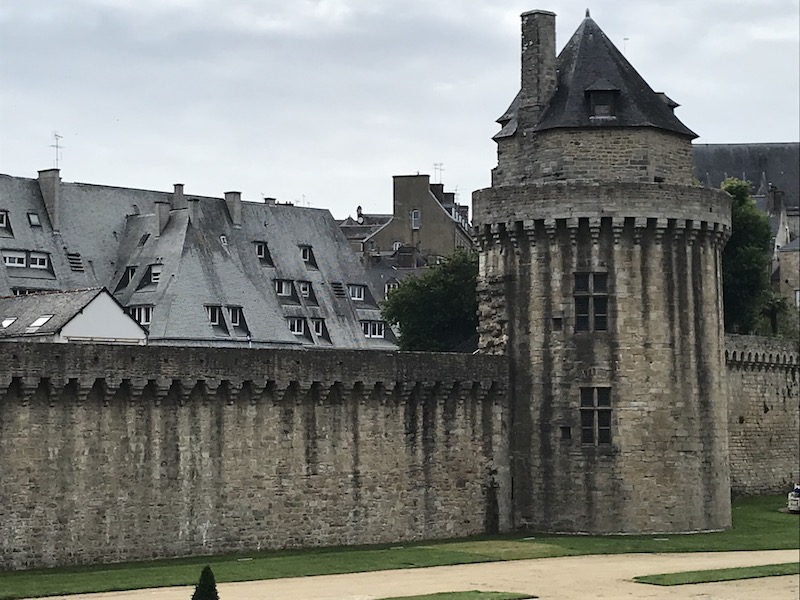

The Vannes Hôtel de Ville was built between 1880 and 1886 in an Italian Renaissance style and is somewhat of a scale copy of the Hôtel de Ville in Paris (there are a lot of similarities!). It is framed by two pavilions, with a clock on the main part of the façade, the coat of arms on the pediment, and a large carillon bell tower. The statue in front is that of Arthur III (Arthur of Richemont) who was the Duke of Brittany for a short 13 months in 1457 and 1458.
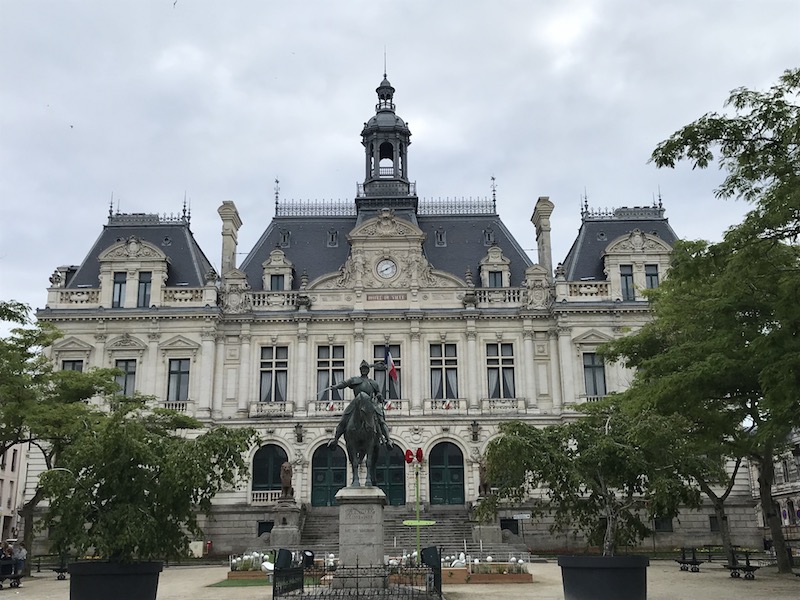
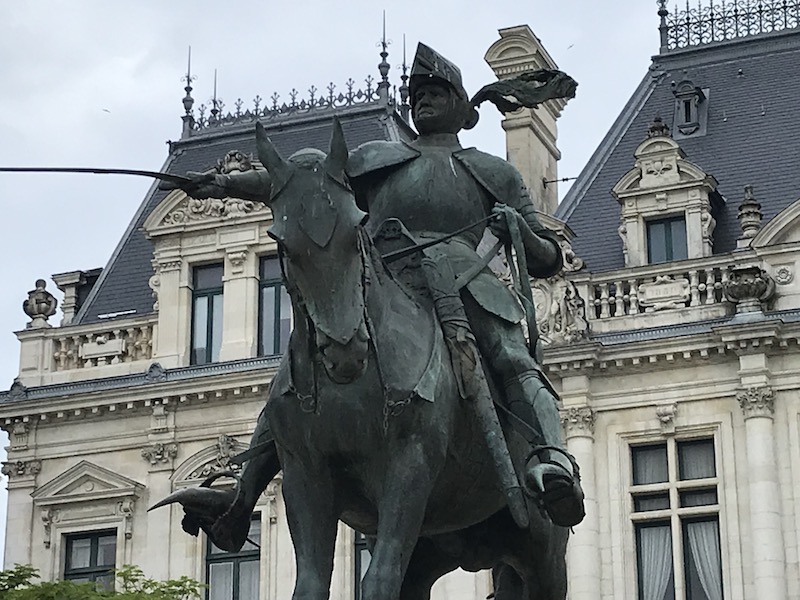
While we didn't go into the La Cohue Museum of Fine Art, we did take a peek inside at a piece of art that is being shown in the central passageway. It looks like roots or branches of a tree which weaves its way through the various openings. The last picture shows it from the start and you can see how there is a framework and then the bark covering.
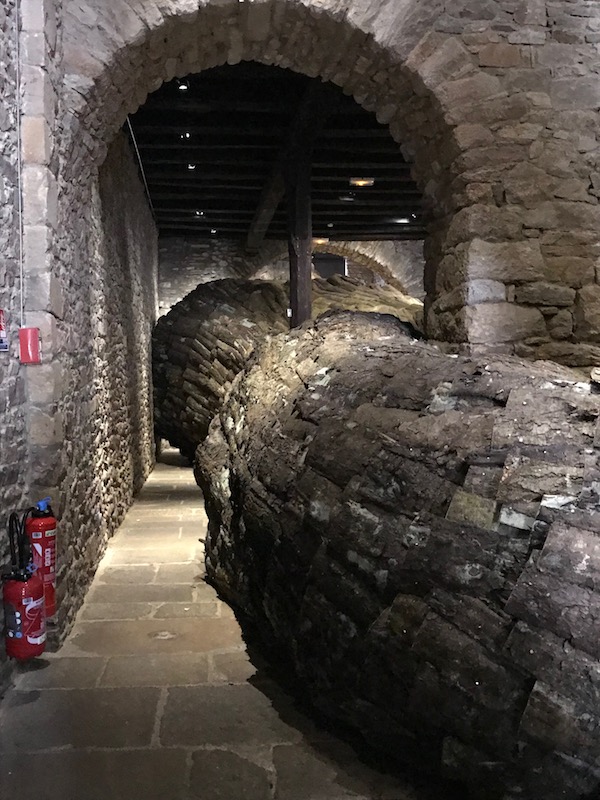
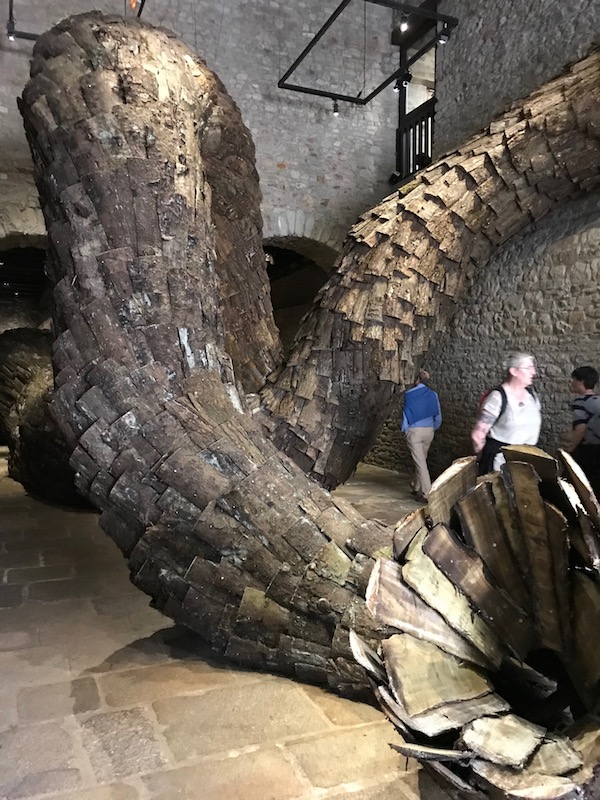
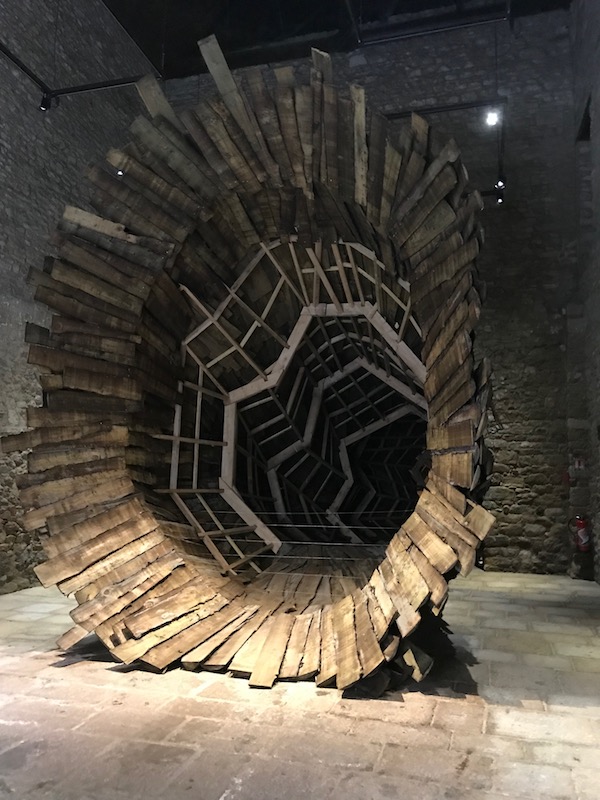
Another half-timbered house, this one has a unique characteristic. On each of the wooden beams in the front, there is a carved medieval "beast". Two of them are not recognizable, but the bear and the lion are in really good shape still.
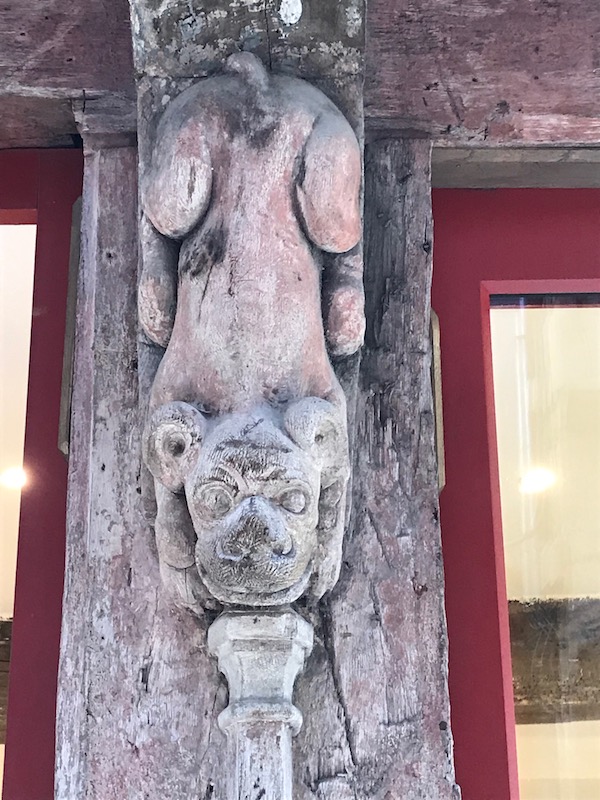
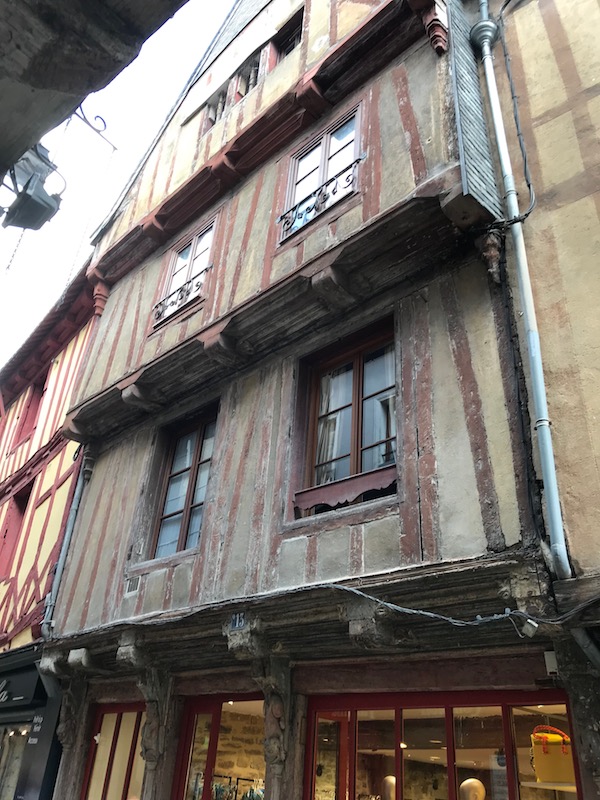
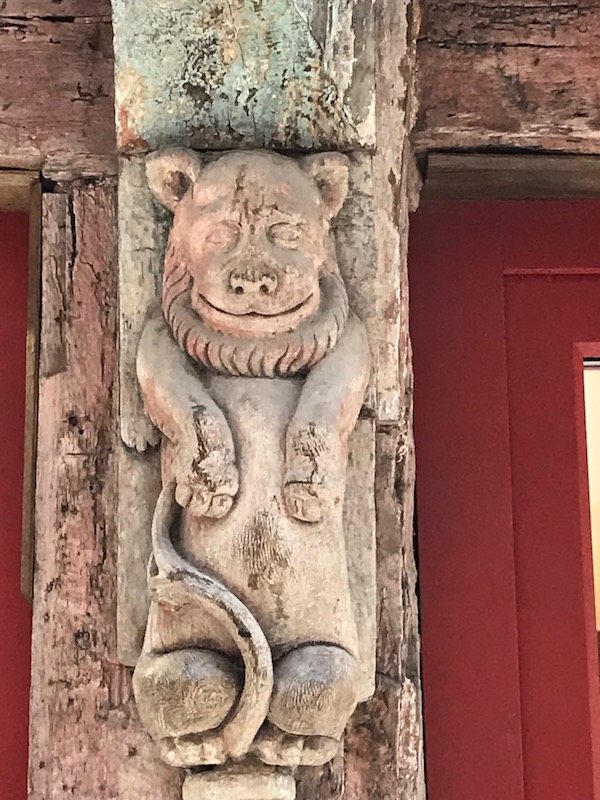
The is called the Prison Tower and Gate, and dates to the 13th century. You can see two doors: the smaller pedestrian door and the larger one for carriages. The tower was used as a prison during the Revolution but after a new prison was built, the door and each of the 2 towers were sold off. One tower was demolished in 1886, leaving just the doors and the single tower.
